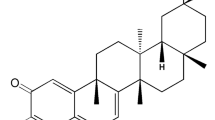Summary
The effects of benazepril on P42/44MAPK, angiotensin II expression in renal tissue and renal pathological change of the experimental diabetic rats were assessed and the possible mechanism of benazeprils renoprotective effect was explored. Adult male Wistar rats, 11–12 weeks age, weighing initially 160 to 200 g were randomly allocated into 2 groups: control group (A,n=6) and experimental group (n=12). Diabetic rats in experimental group were rendered diabetic by intraperitoneal injection of Streptozotocin (60 mg/kg body weight), and randomly subdivided into B group (diabetic control) and C group (diabetic rats treated with benazepril, 6 mg/kg every day). Studies were performed 8 weeks after induction of diabetes. Twenty-four h urine of every rat was collected to detect urine creatinine. Serum glucose concentration and serum creatinine were determined by collecting blood samples from the inferior vena cava. Body and kidney weight were recorded. Creatinine clearance (Ccr) and ratio of kidney weight to body weight were calculated. Plasma and renal tissue angiotensin II concentration was assayed by radioimmunoassay (RIA). The phospo-p44/42MAPK protein expression was detected by Western-blot. The results showed that benazepril had no significant effect on the blood glucose level in diabetic rats in two experimental groups. Ccr and ratio of kidne weight to body weight were increased in group B (P<0.01) as compared with normal rats at the end of the 8th week. At the end of the 8th week, Ccr in group C was lower than that in group B (P<0.01). The ratio of kidney weight to body weight in group C was lower than that in group B at the 8th week. There were glomeruli hypertrophy and slight or moderate mesangium proliferation in diabetic rats, while there was fragmentally proliferative measangium in group C at the end of the 8th week. Renal tissue angiotensin II concentration was significantly increased in group B, while benazepril could significantly decrease the concentration of angiotensin II in renal tissue. The expression of the phospo-p44/42MAPK protein in group B was increased as compared with group A, while it was decreased in group C as compared with group B. P42/44MAPK pathway participated in the pathogenesis of diabetic nephropathy. Benazepril can eliminate high filtration of glomeruli, decrease proteinuria, and eliminate renal hypertrophy as well as renal destruction. Renoprotective effect of benazepril in diabetic rats may be partly related to the inhibition of angiotensin II—P42/44MAPK pathway.
Similar content being viewed by others
References
Awazu M, Ishokura K, Hidu Met al. Mechanisms of MAPK activation in experimental diabetes. J Am Soc Neprol, 1999, 10:738
Leehey D J, Singh A K, Anavi Net al. Role of angiotensin II in diabetic nephropathy. Kidney Int, 2000, 58 (Suppl 77):93
Shapiro P S, Ahn N G Feedback regulation of Raf1 and motogen-activated protein kinase (MAP) kinase kinases 1 and 2 by MAP kinase phosphatase-1 (MKP-1). J Biol Chem, 1998, 73(3):1788
Mauer S M, Steffes M W, Elis E Net al. Structural-functional relationships in diabetic nephropathy. J Clin Invest, 1984, 74:1143
Steffes M W, Sterby R, Chavers Bet al. Mesangial expansion as a central mechanism for loss of kidney function in diabetic patients. Diabetes, 1989, 38:1077
Wilmer W A, Dixon C L, Hebert Cet al. Chronic exposure of human mesangial cells to high glucose environments activates the p38 MAPK pathway. Kidney Int, 2001, 60(3):858
Becker B N, Yasuda T, Kondo Set al. Mechanical stretch/relaxation stimulates a cellular renin-angiotensin system in cultured rat messangial cell. Exp Nephrol, 1998, 6:57
Wen H, Lin S Y Renal protective effect of valsartan in diabetic rats. Chin J Intern Med (Chinese), 1999, 38 (3):157
Wu Y G, Yu Y, Lin S Y Effect of Benazepril on expression of cyclin kinase inhibitor P21CIPI protein in renal tissue of diabetic rats. nephrology Dialysis & Transplantation (Chinese), 1999, 1 (8):21
Wolf G, Neilson E G. Angiotensin II as a renal growth factor. J Am Soc Nephrol, 1993, 3:1531
Seikaly M G, Arant B S Jr, Seney F D Jr. Endogenous angiotensin concentrations in specific intrarenal fluid compartments of the rat. J Clin Invest, 1990, 86:1352
Page C, Doubell A F Mitogen-activated protein kinase (MAPK) in cardiac tissues. Mol Cell Biochem, 1996, 157(1–2):49
Hagemann C, Blank J L The ups and downs of MEK kinase interactions. Cell Signal, 2001, 13(12):863
Hubank M, Schatz D G cDNA representational difference analysis: a sensitive and flexible method for identification of differentially expressed genes. Methods Enzymol, 1999, 303:325
Matsubara H Pathophysiological role of angiotensin II type 2 receptor in cardiovascular and renal diseases. Circ Res, 1998, 83(12):1182
Jaimes E A, Galceran J M, Raij L Angiotensin II induces superoxide anion production by mesangial cells. Kidney Int, 1998, 54(3):775
Anderson P W, Do Y S, Hsueh W A Angiotensin II causes mesangial cell hypertrophy. Hypertension, 1993, 21(1):29
Author information
Authors and Affiliations
Additional information
L V Yongman, female, born in 1962, Associate Professor
Rights and permissions
About this article
Cite this article
Yongman, L.V., Junwu, D., Xiaochun, N. et al. Renoprotective effect of benazepril on diabetic nephropathy mediated by P42/44MAPK. Current Medical Science 25, 32–35 (2005). https://doi.org/10.1007/BF02831380
Received:
Published:
Issue Date:
DOI: https://doi.org/10.1007/BF02831380




